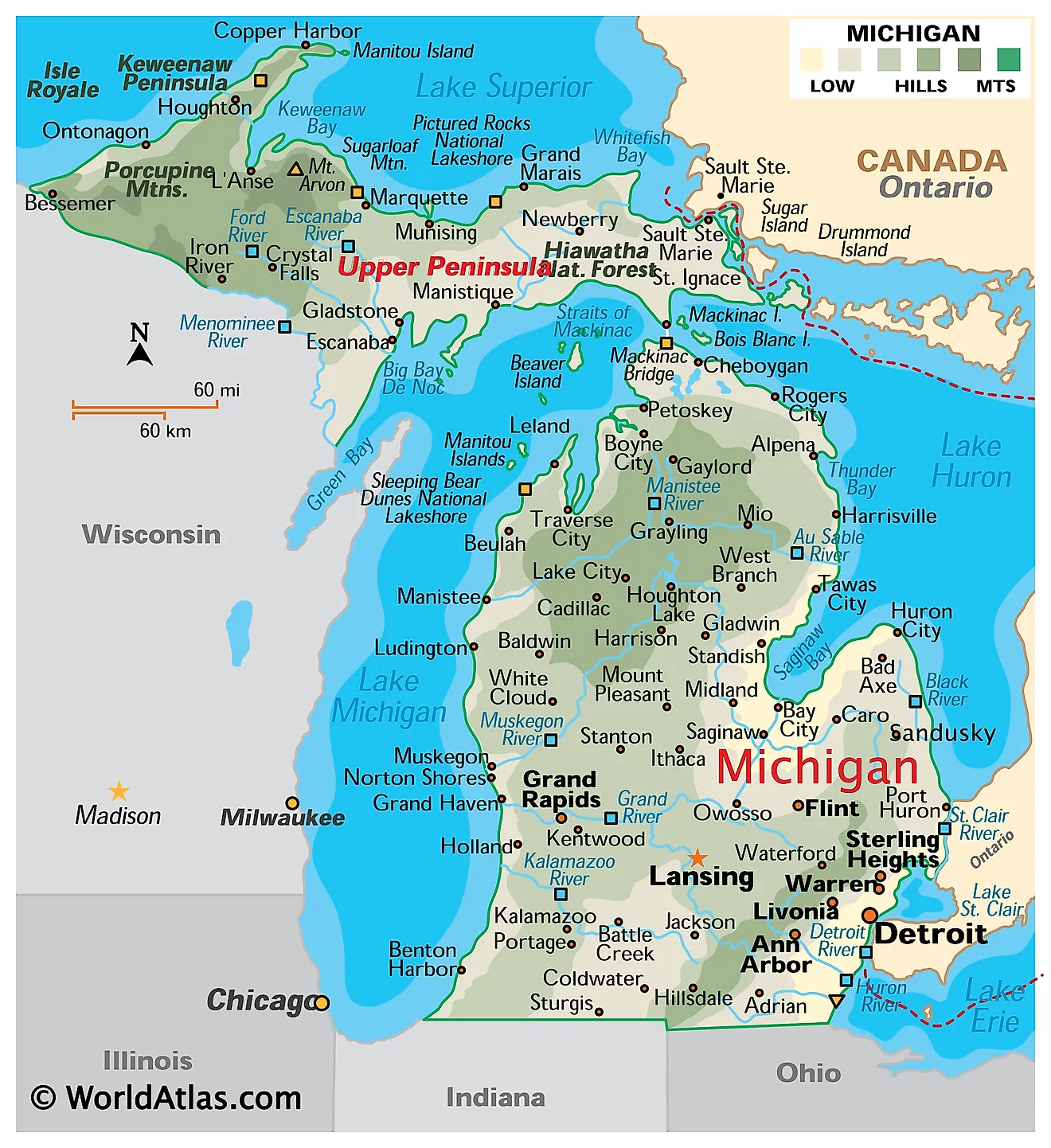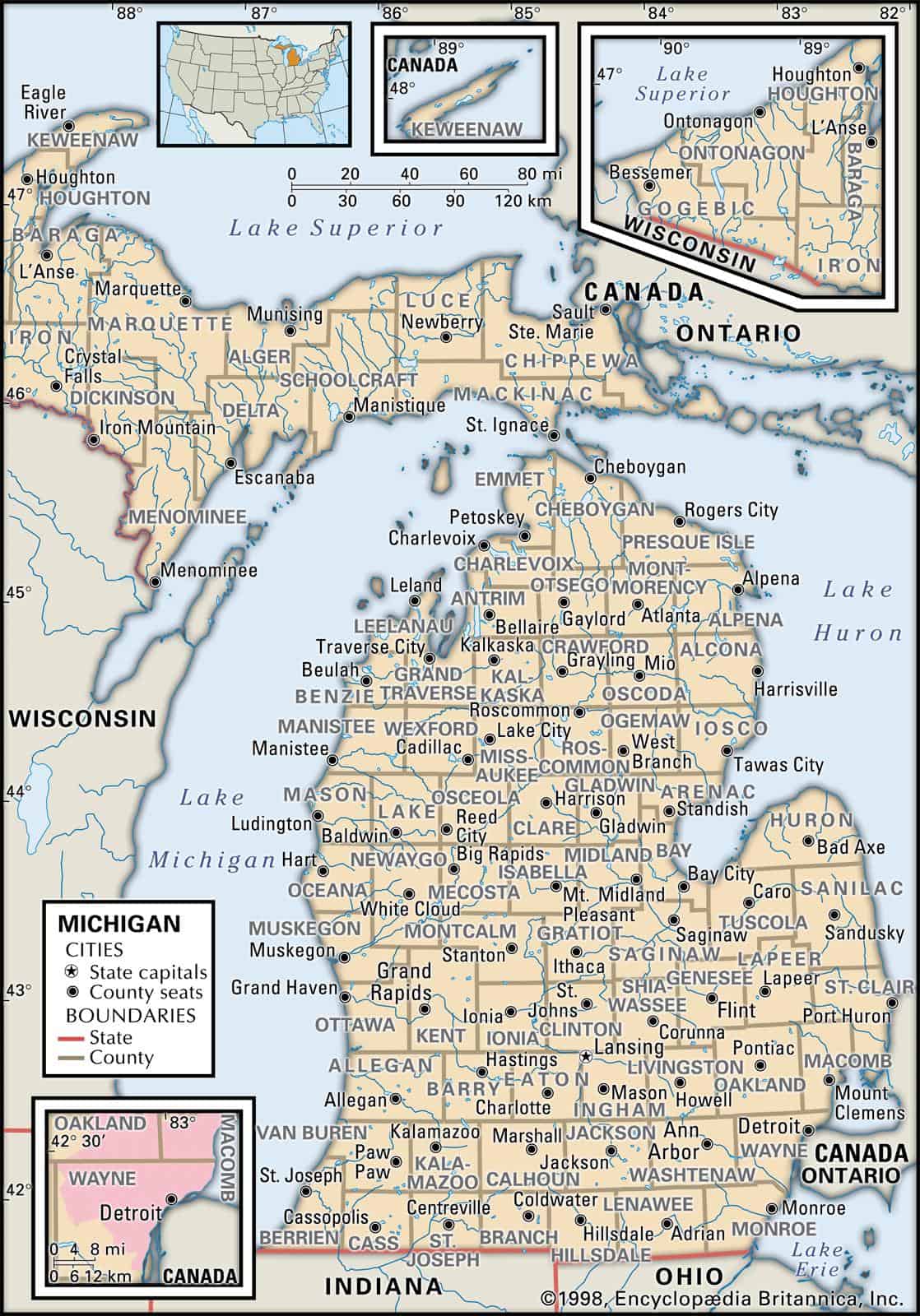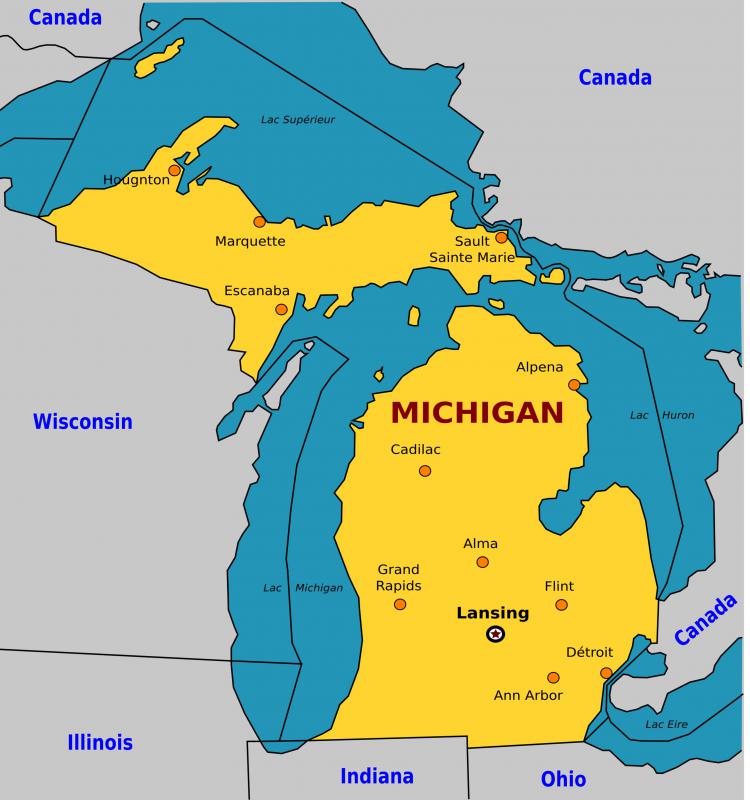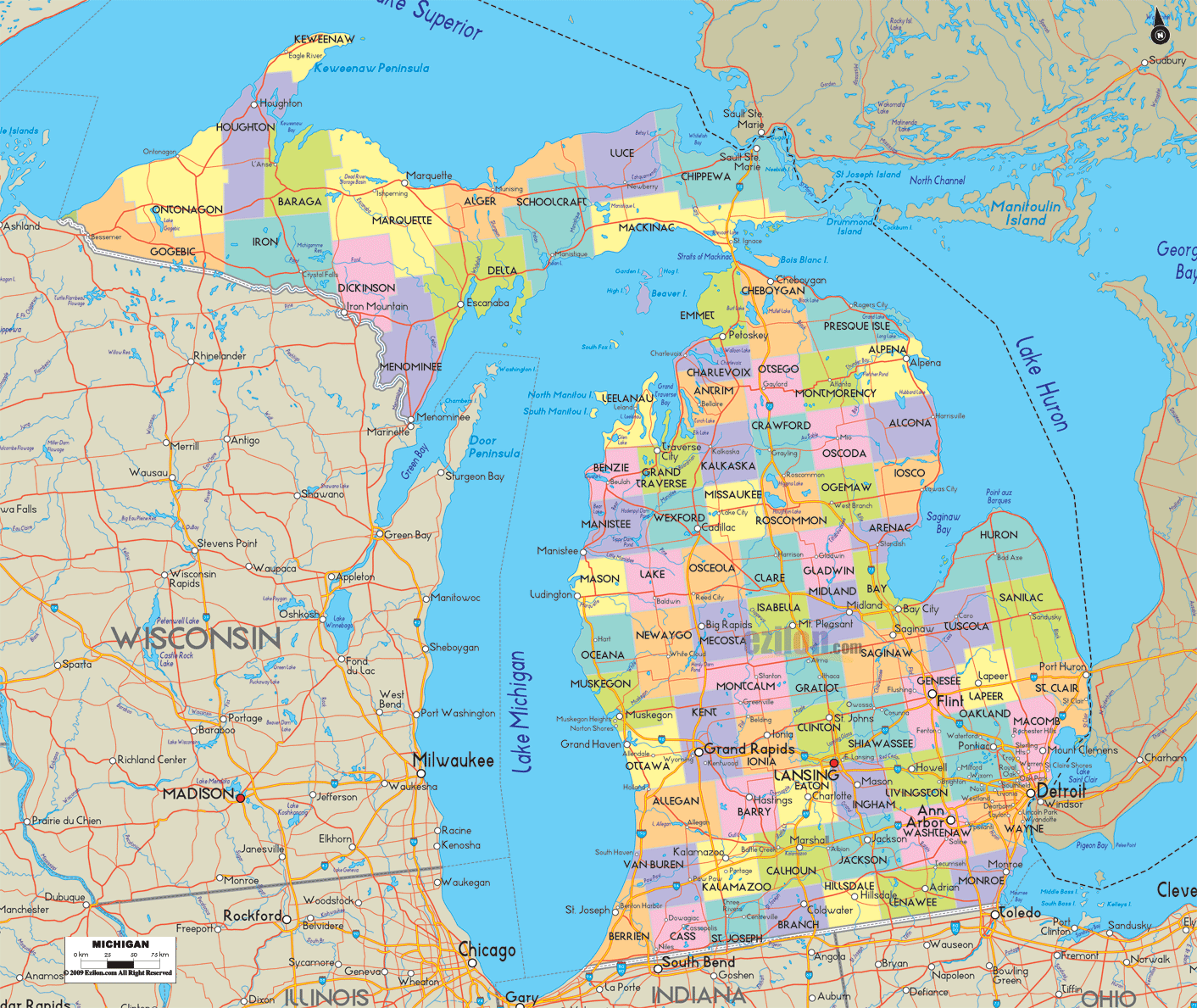A Comprehensive Look at Michigan’s County Map: Navigating the Great Lakes State
Related Articles: A Comprehensive Look at Michigan’s County Map: Navigating the Great Lakes State
Introduction
With enthusiasm, let’s navigate through the intriguing topic related to A Comprehensive Look at Michigan’s County Map: Navigating the Great Lakes State. Let’s weave interesting information and offer fresh perspectives to the readers.
Table of Content
A Comprehensive Look at Michigan’s County Map: Navigating the Great Lakes State

Michigan’s county map, a patchwork of 83 distinct administrative units, is a vital tool for understanding the state’s diverse geography, history, and culture. Each county, with its unique blend of urban and rural landscapes, offers a glimpse into the tapestry of life within the Great Lakes State.
A Geographic Mosaic:
The map reveals a state divided into two peninsulas: the Upper Peninsula (UP), a rugged and sparsely populated region characterized by vast forests, sparkling lakes, and the iconic Mackinac Bridge, and the Lower Peninsula (LP), a more densely populated region with a mix of urban centers, agricultural lands, and sprawling forests.
The counties themselves vary dramatically in size and population density. The largest county by land area is Chippewa County in the UP, while the smallest is Mackinac County, also in the UP. Wayne County, home to Detroit, is the most populous, while Luce County in the UP boasts the lowest population.
Historical Roots:
Michigan’s county system has roots in the early days of statehood, established to facilitate local governance and the provision of essential services. The first counties were formed in the 18th century, with the final county, Luce, being established in 1929.
Each county possesses a unique history, shaped by its geographical location, resource availability, and the waves of settlers who have called it home. For example, the counties surrounding the Great Lakes have historically been centers of shipping and trade, while counties in the interior have been more agricultural in focus.
The Importance of County Boundaries:
The county lines on Michigan’s map are not merely arbitrary lines on a map but represent a framework for:
- Local Governance: Each county is governed by an elected board of commissioners, responsible for overseeing local issues like public health, law enforcement, and infrastructure.
- Property Taxes: Property taxes are levied at the county level, contributing to the funding of essential services.
- Education: School districts often align with county boundaries, ensuring local control over education.
- Emergency Services: County-level emergency response teams are crucial for coordinating disaster relief efforts.
- Economic Development: Counties play a key role in promoting economic growth and supporting local businesses.
Exploring the Counties:
Each county on Michigan’s map offers a distinct experience, from the bustling urban centers of Detroit and Grand Rapids to the serene landscapes of the UP. Here’s a glimpse into some of the diverse offerings:
Upper Peninsula:
- Mackinac County: Home to the iconic Mackinac Bridge and Mackinac Island, known for its horse-drawn carriages and historic architecture.
- Keweenaw County: A picturesque region with stunning Lake Superior shoreline, historic copper mines, and charming towns.
- Marquette County: A hub for outdoor recreation, boasting the picturesque Pictured Rocks National Lakeshore and the vibrant city of Marquette.
Lower Peninsula:
- Wayne County: Home to Detroit, a city steeped in automotive history and cultural vibrancy.
- Ottawa County: A popular tourist destination with beautiful beaches, quaint towns, and the vibrant city of Holland.
- Grand Traverse County: Known for its stunning cherry orchards, wineries, and the charming city of Traverse City, a culinary hub.
Understanding the County Map:
The Michigan county map is an invaluable tool for:
- Navigating the State: It provides a framework for understanding the geography and location of different regions.
- Planning Travel: Identifying points of interest, attractions, and transportation routes.
- Understanding Local Issues: Gaining insight into local politics, economic development, and community concerns.
FAQs about Michigan’s County Map:
Q: How many counties are there in Michigan?
A: There are 83 counties in Michigan.
Q: What is the largest county by land area?
A: Chippewa County in the UP is the largest by land area.
Q: What is the most populous county?
A: Wayne County, home to Detroit, is the most populous.
Q: What is the least populous county?
A: Luce County in the UP has the lowest population.
Q: What is the purpose of county boundaries?
A: County boundaries serve as a framework for local governance, property taxes, education, emergency services, and economic development.
Tips for Using Michigan’s County Map:
- Consult a digital map: Online mapping tools provide interactive features and detailed information about each county.
- Explore county websites: Each county has its own website with information about local government, services, and attractions.
- Visit county fairs and festivals: These events offer a glimpse into the unique culture and heritage of each county.
- Connect with local residents: Engage with people in different counties to gain a deeper understanding of their communities.
Conclusion:
Michigan’s county map is a vital resource for understanding the state’s diverse geography, history, and culture. By exploring the map and its individual counties, one can gain a deeper appreciation for the unique character and vibrant communities that make up the Great Lakes State.








Closure
Thus, we hope this article has provided valuable insights into A Comprehensive Look at Michigan’s County Map: Navigating the Great Lakes State. We appreciate your attention to our article. See you in our next article!